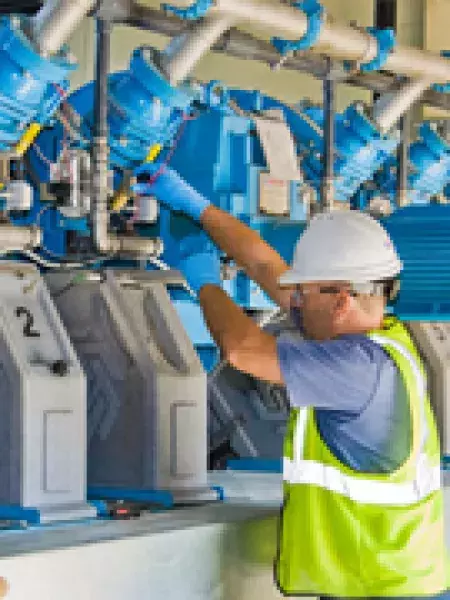
As Veolia North America continues to stress the importance of using water wisely, conservation from our commercial and industrial businesses partners has been outstanding. The following 10-step approach to a successful water conservation program for businesses can help protect more of this limited, essential resource.
1. Make a commitment to water conservation Prior experiences have revealed that for any program to be successful, the desire to conserve water must be present from the highest level of management on down. Upper management should understand that water conservation is necessary and be fully committed to its support.
2. Appoint a Conservation Champion Companies that assign responsibility to an individual have better results than those that do not. So, give someone within your organization responsibility for creating, implementing and maintaining your water conservation program.
3. Determine how and where you use water Know how much water is being used for each of your organization’s industrial processes and/or domestic needs. To assist you in determining how your on-site water is being used, you may want to install sub-meters.
4. Learn about conserving water in the business environment Learn from businesses that have already established a water conservation plan and apply these suggestions to your particular business or situation to reach your goals.
5. Check your system for leaks Leaks can be detected by conducting a periodic shutdown of all water-using facilities and reading the water meter at intervals during the shutdown. If the dial on the meter moves, then you have a leak somewhere on your facility.
6. Set a conservation goal It is important to have realistic goals, but goals should be high enough to require substantial effort. Allow these goals to serve as progress reference points. They will illustrate the effectiveness of your water conservation program.
7. Involve your employees Teach water awareness. Many companies have posted signs throughout their facilities, which help to raise awareness of water conservation among employees. Consider creating a competition among employees—like establishing which work shift can use the least amount of water. Once employees are aware of their water use, water consumption usually decreases.
8. Install low-flow devices Use toilet tank displacement devices or install vacuum flush toilets. If you already have these types of toilets, make sure they are adjusted to use the minimum amount of water required per flush. All showering facilities should be equipped with low-flow shower heads. Shower heads with on-off valves provide the opportunity to conserve more water than those without.
9. Be aware of available water-efficient equipment Equipment manufacturers are becoming more aware of the need for water conservation and are designing pieces of equipment that require less water. Examine all possibilities when replacing equipment. You may find you have a choice in your purchases, and water conservation could be a determining factor in the selection process.
10. Monitor your results Each water bill includes your consumption history. It’s possible for you to follow this history and get an immediate idea as to how well you are doing compared to last year during the same month’s billing period. Use charts, graphs and other records to keep track of your conservation progress.